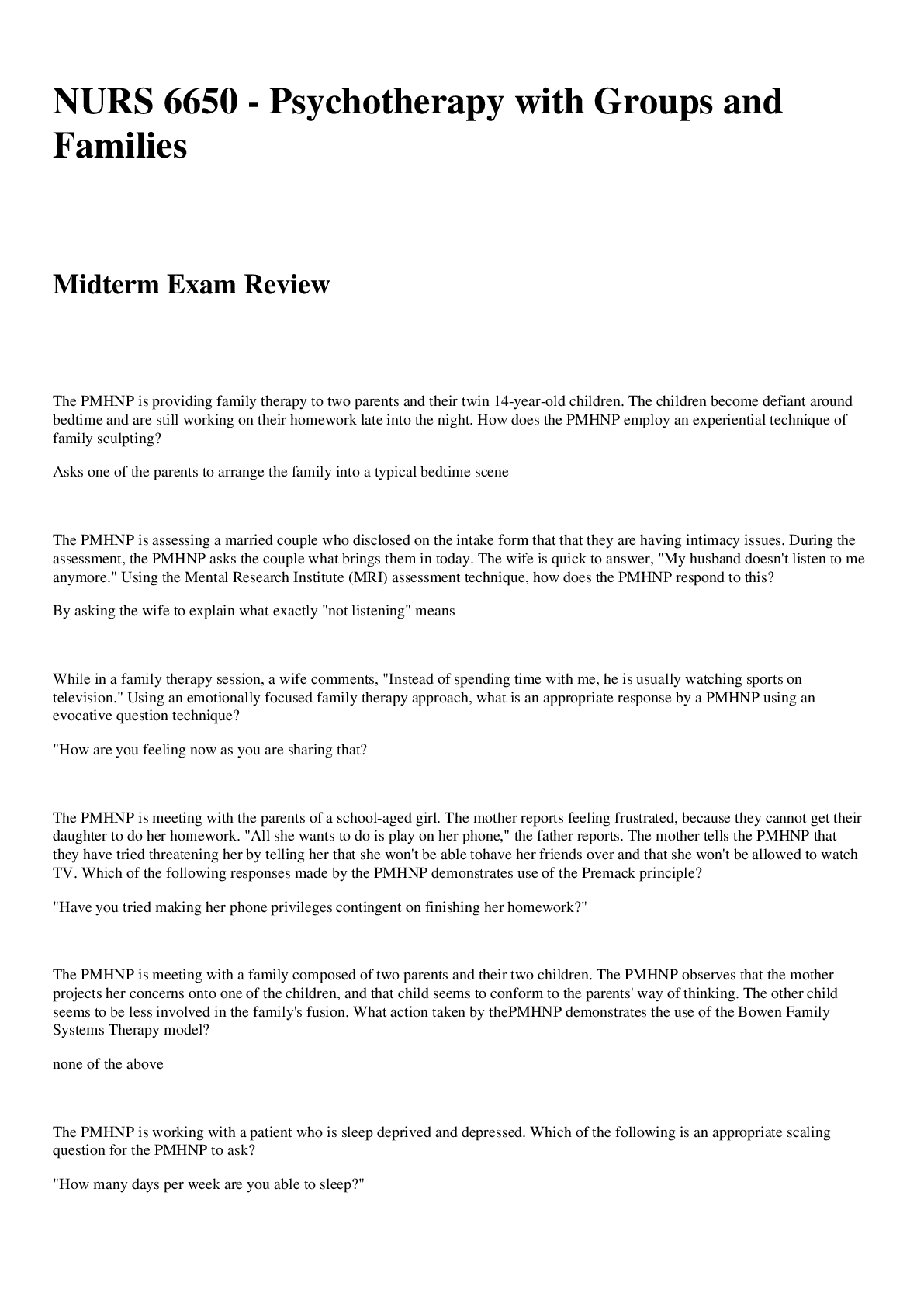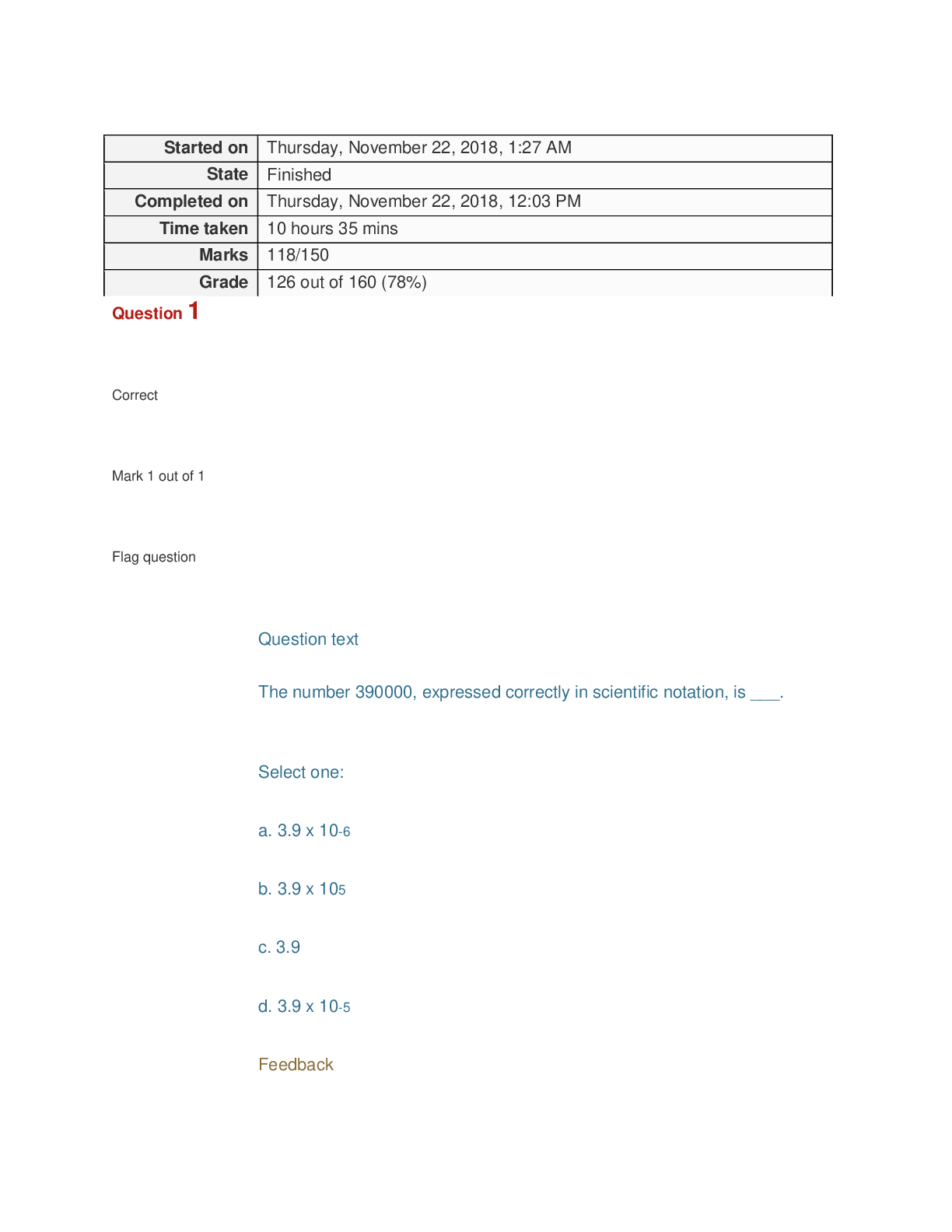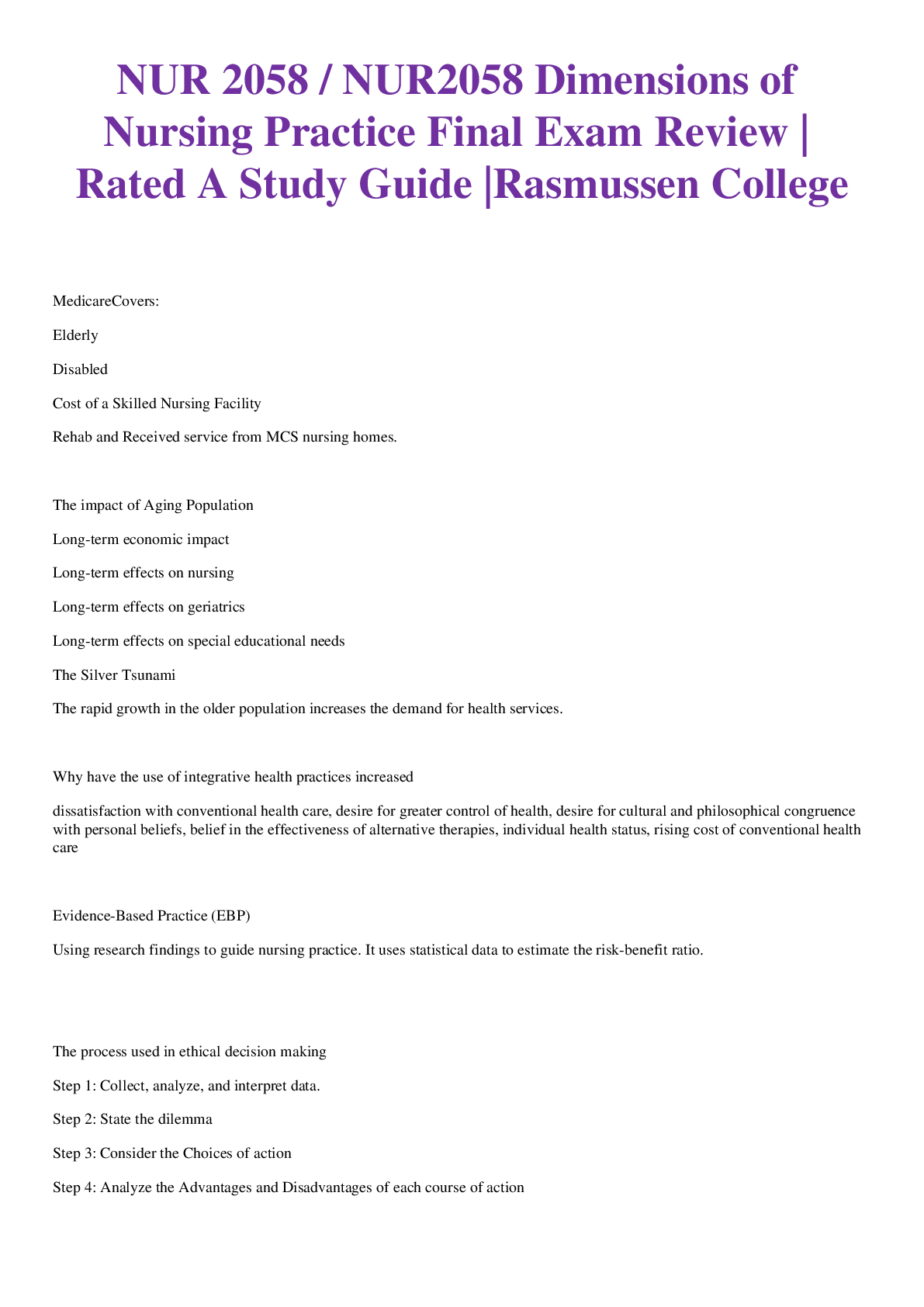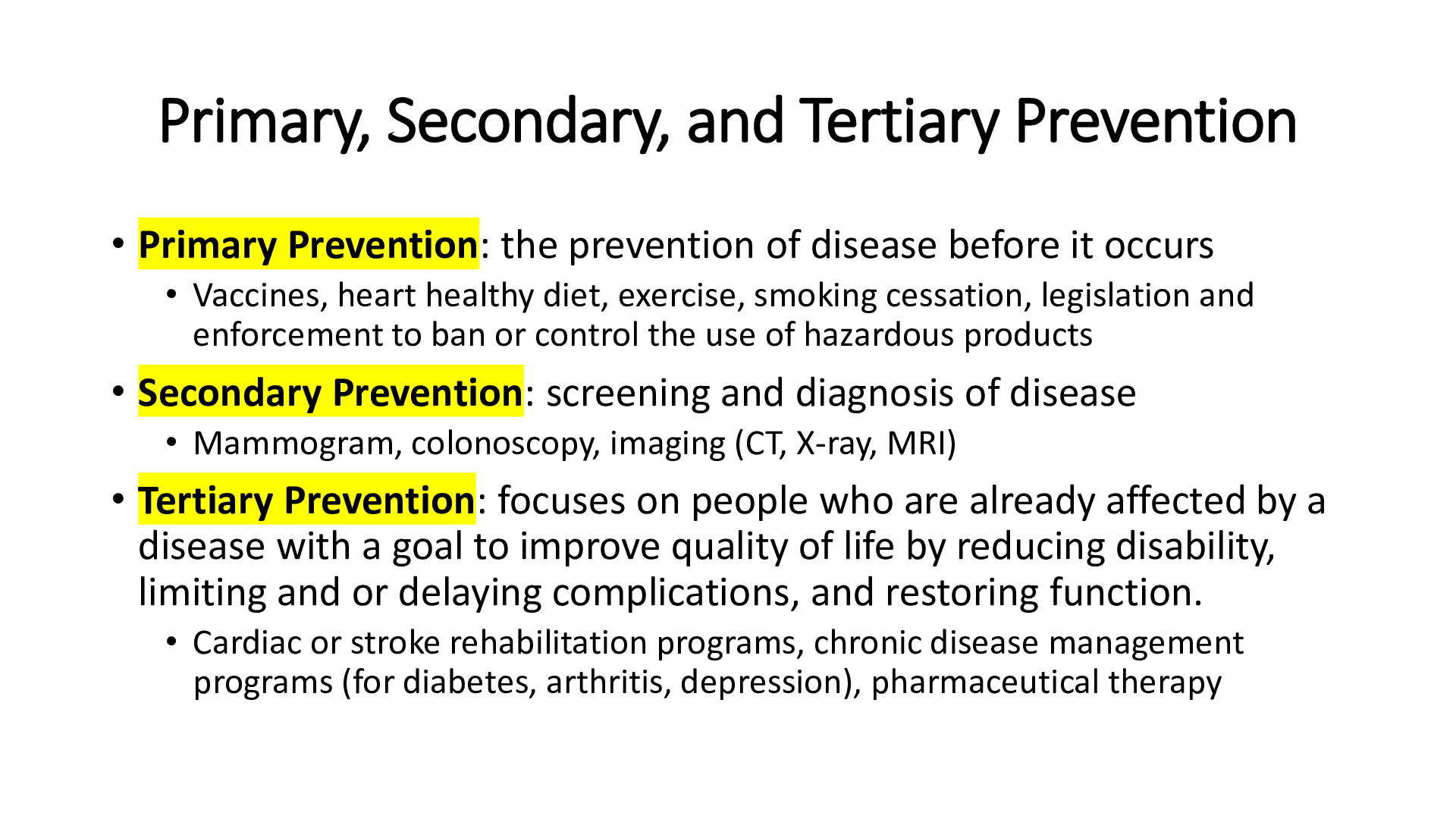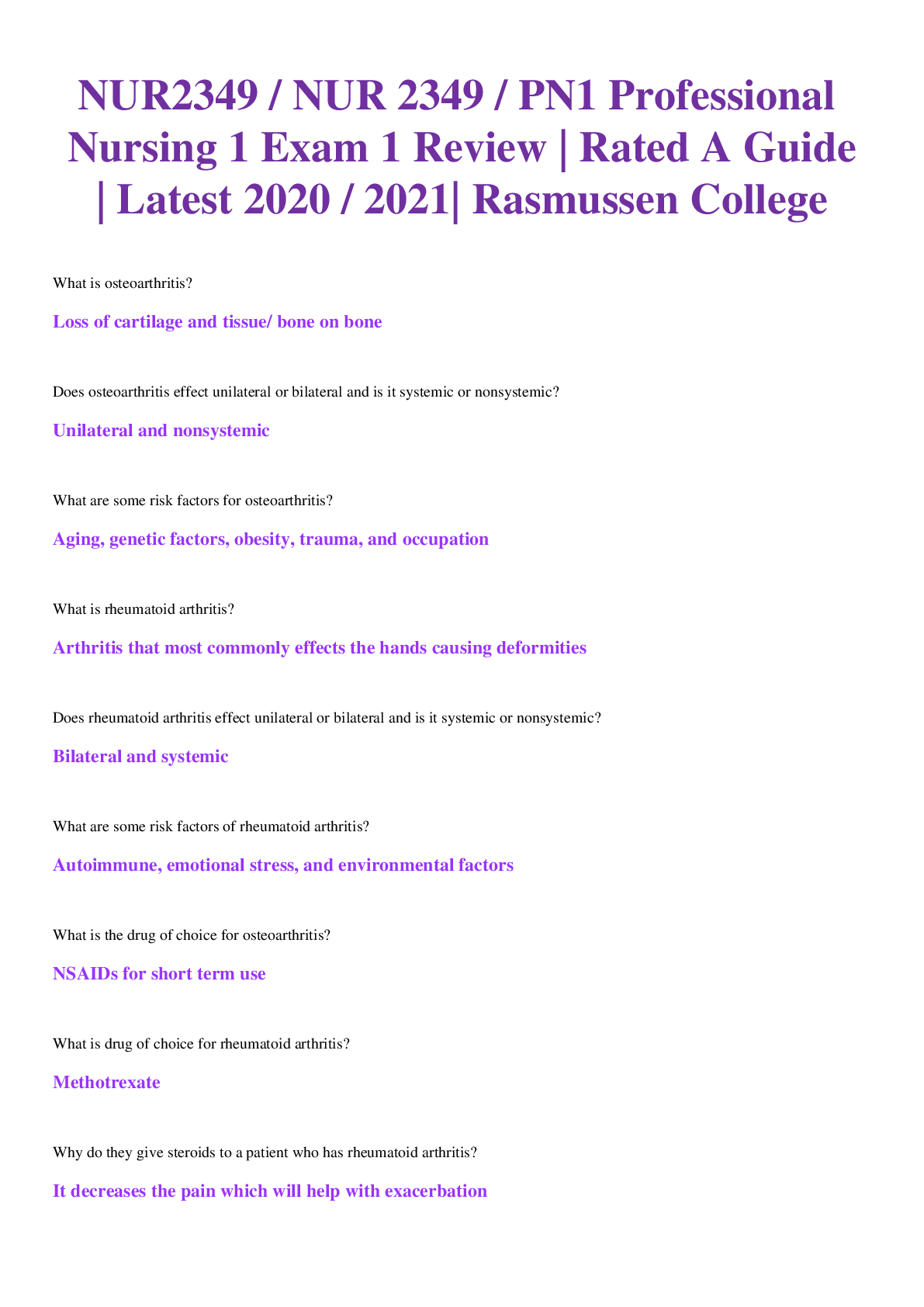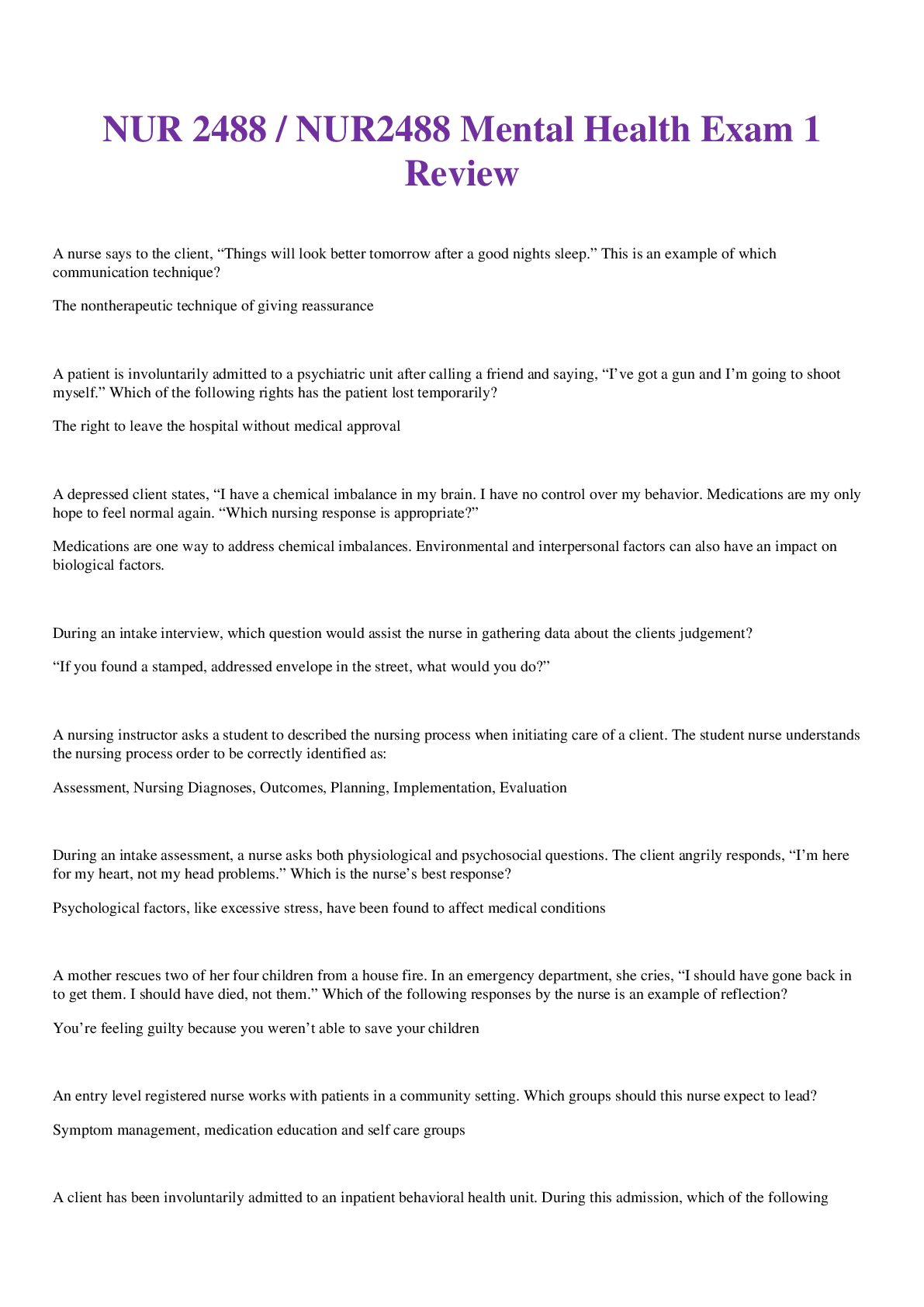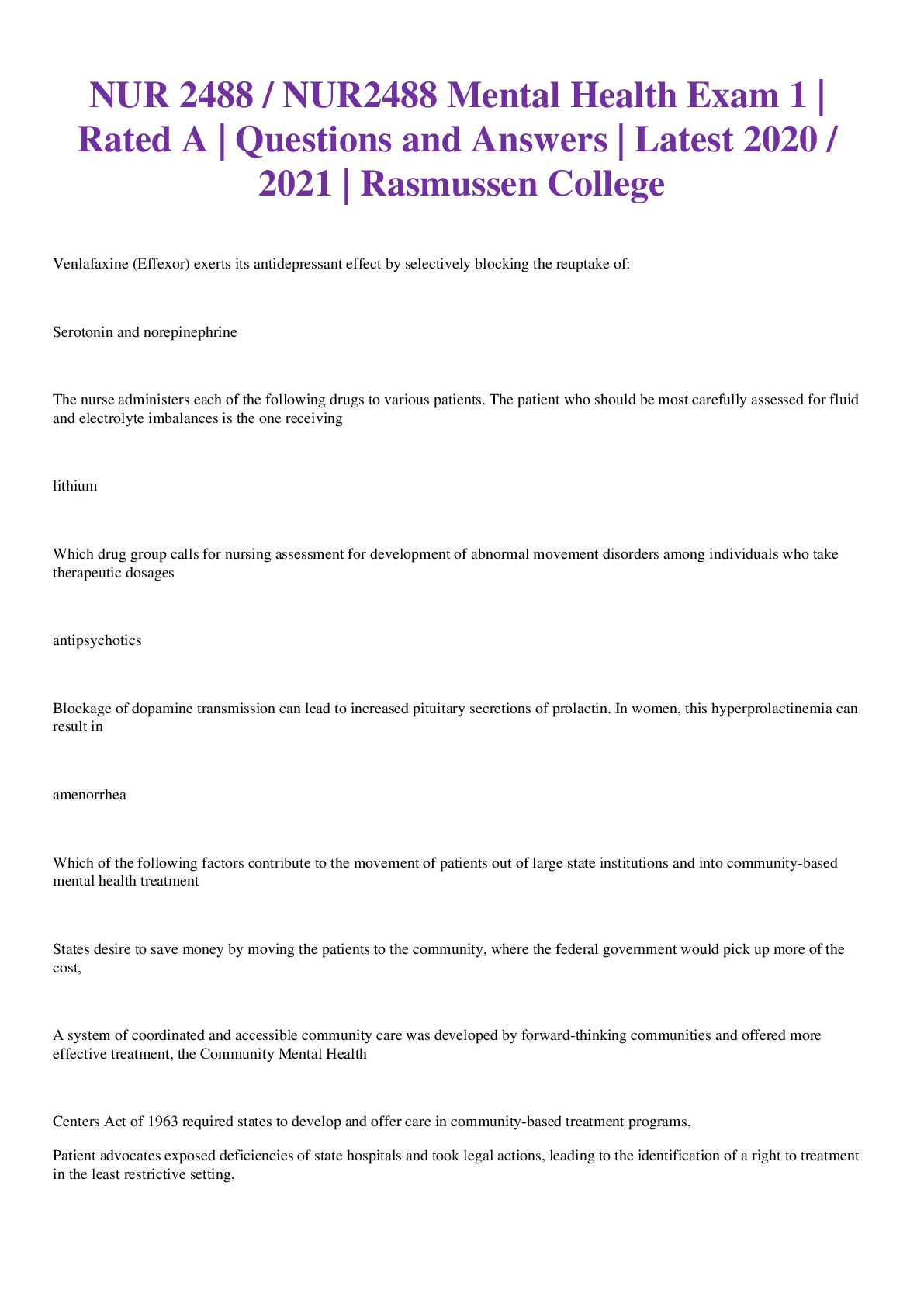*NURSING > EXAM REVIEW > Final_Epidemiology_module[1]/Grade A Guide (All)
Final_Epidemiology_module[1]/Grade A Guide
Document Content and Description Below
KNOWLEDGE BASED COMPETENCIES AND METHODS COMPETENCIES METHODS 1. Listing of epidemiological techniques and methods Lecture, Review of Research Articles . 2. Describing application of these methods ... to communicable and non- communicable diseases in community and hospital situation Project work in Community and Hospital. 3. Apply biostatistical method and technique Lecture, Practical and Project work. 4. Deciding when there is epidemic visit to District health office and record section 5. Method of surveillance Lecture and visit to PHC 6. Steps of investigation of an epidemic Case Study 7. Steps Of Designing any Research activity Project work and lecture SKILL BASED COMPETENCIES AND METHODS 1. Use epidemiology as a scientific tool to make rational decision relevant to community & individual patient intervention Case Study And Project Work 2. Collect , analyse , interpret & present simple community & hospital based data. Project Work 3. Investigation of epidemic. Case Study 4. Designing study to test hypothesis Lecture and Case Study 5. Applying appropriate statistical method to test the significance of association Project work 6. Writing research article /report. Project work, Article review 7. Method for reviewing research article. Journal presentation and discussion 8. To keep track of the disease in the community & to decide the action if warranted at PHC level. Lecture and Case study AN EXAMPLE… INVESTIGATION OF AN OUT BREAK. 1. Defining Epidemic Lecture ,Review of Research articles 2. Listing types of epidemic Project work in community and hospital 3. Deciding when there is epidemic visit to district health office and record section 4. Method of surviellence Lecture and visit to PHC 5. Steps of investigation of an epidemic Case Study 6. Prevalence and incidence of endemic diseases Visit to PHC 7. Demography of the area of concern Lecture 8. Reference laboratories available for Virus/Bacterial Culture Visit to PHC/CHC/District hospital 9. Collect , analyse , interpret & present data related to out break Project Work 10. Applying appropriate statistical method to test the significance of association. Project Work CONTENTS SECTIONS Topics SECTION - A Epidemiological methods and techniques SECTION - B Surveillance- methods use and example SECTION - C Outbreak investigation SECTION - D Designing a research activity ANNEXURES • OUTBREAK INVESTIGATION (Trigger & Response Mechanisms) In IDSP • IDSP forms and surveillance guidelines • Writing reports/ articles • Reviewing a research article • Exercise on understanding community • Exercise Community Involvement and Communication • Exercise on supportive supervision SECTION – A Epidemiological methods and techniques Epidemiology module of practical skills Learning Objective • The student should be able to know the relevance & importance of applying epidemiological skills for effective outcome to bring out effectiveness as a basic doctor in Rural e.g. PHC& other urban settings . • Student should be able to understand the implication of epidemiological principles in various National Health Programmes. • Use epidemiology as a scientific tool to make rational decision relevant to community & individual patient intervention Whenever should students go for a are going to field visits they he/she should be able to do the Measurement of morbidity , mortality , Incidence & prevalence from existing data of recent outbreaks in community provided by the health centre authorities. Epidemiology Defined What is epidemiology? This was the question put forward in a group of doctors in a district doctors meet , and the answers were, • "The worst taught course in medical college. • “The second, a clinical faculty member, told him epidemiology was "the science of making the obvious obscure." • "the science of long division" • "The study of skin diseases." Actually the less entertaining definition of epidemiology is "The study of the distribution and determinants of health-related states in specified populations, and the application of this study to control health problems." A look at the key words will help illuminate the meaning: • Study—Epidemiology is the basic science of public health. It's a highly quantitative discipline based on principles of statistics and research methodologies. • Distribution—Epidemiologists study the distribution of frequencies and patterns of health events within groups in a population. To do this, they use descriptive epidemiology, which characterizes health events in terms of time, place, and person. • Determinants—Epidemiologists also attempt to search for causes or factors that are associated with increased risk or probability of disease. This type of epidemiology, where we move from questions of "who," "what," "where," and "when" and start trying to answer "how" and "why," is referred to as analytical epidemiology. • Health-related states—Although infectious diseases were clearly the focus of much of the early epidemiological work, this is no longer true. Epidemiology as it is practiced today is applied to the whole spectrum of health-related events, which includes chronic disease, environmental problems, behavioral problems, and injuries in addition to infectious disease. • Populations—One of the most important distinguishing characteristics of epidemiology is that it deals with groups of people rather than with individual patients. • Control—Finally, although epidemiology can be used simply as an analytical tool for studying diseases and their determinants, it serves a more active role. Epidemiological data steers public health decision making and aids in developing and evaluating interventions to control and prevent health problems. This is the primary function of applied, or field, epidemiology. A comparison between the practice of public health and the more familiar practice of health care helps in describing epidemiology. First, where health care practitioners collect data on an individual patient by taking a medical history and conducting a physical exam, epidemiologists collect data about an entire population through surveillance systems or descriptive epidemiological studies. The health care practitioner uses his or her data to make a differential diagnosis. The epidemiologist's data is used to generate hypotheses about the relationships between exposure and disease. Both disciplines then test the hypotheses, the health care practitioner by conducting additional diagnostic studies or tests, the epidemiologist by conducting analytical studies such as cohort or case-control studies. [Show More]
Last updated: 1 year ago
Preview 1 out of 183 pages
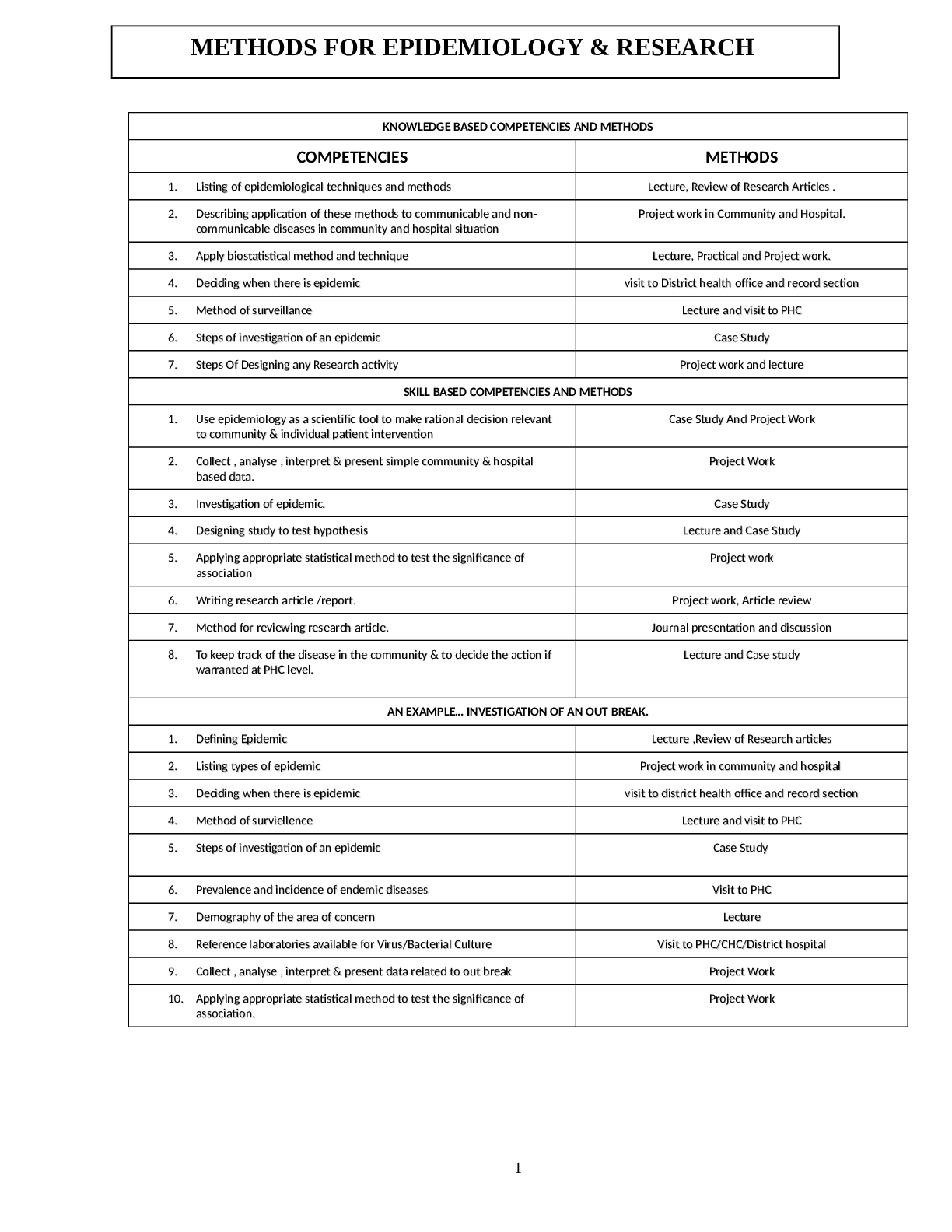
Reviews( 0 )
Document information
Connected school, study & course
About the document
Uploaded On
Aug 10, 2021
Number of pages
183
Written in
Additional information
This document has been written for:
Uploaded
Aug 10, 2021
Downloads
0
Views
44

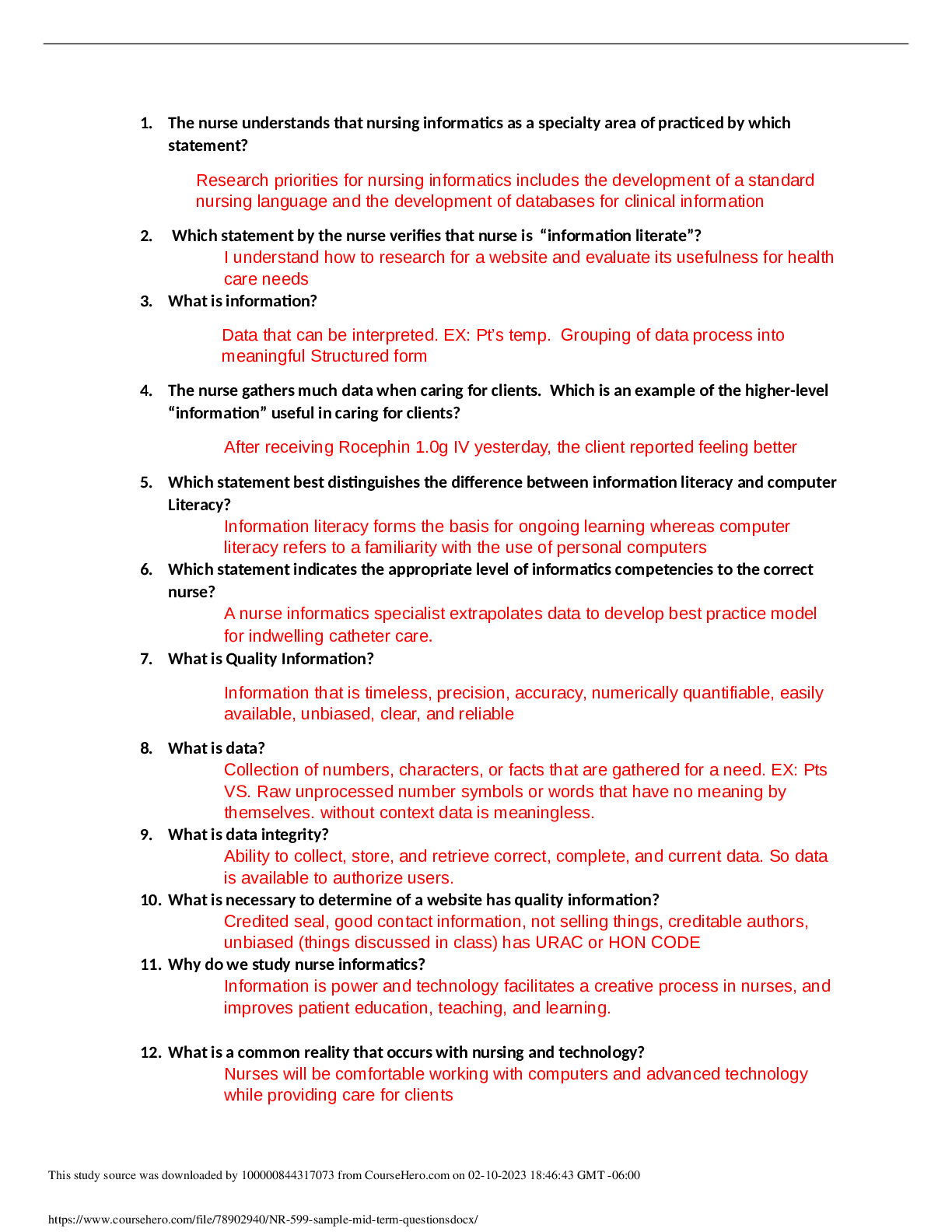
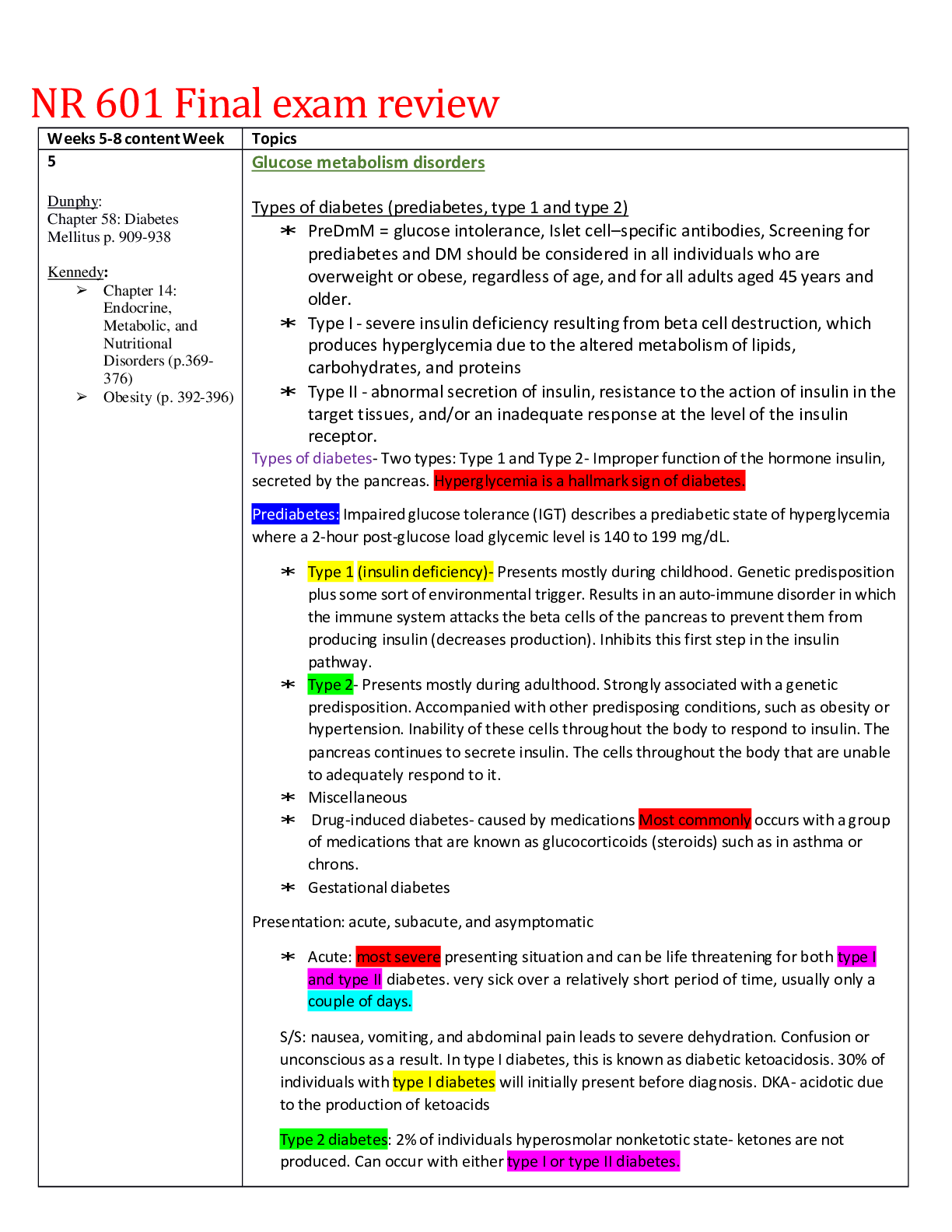
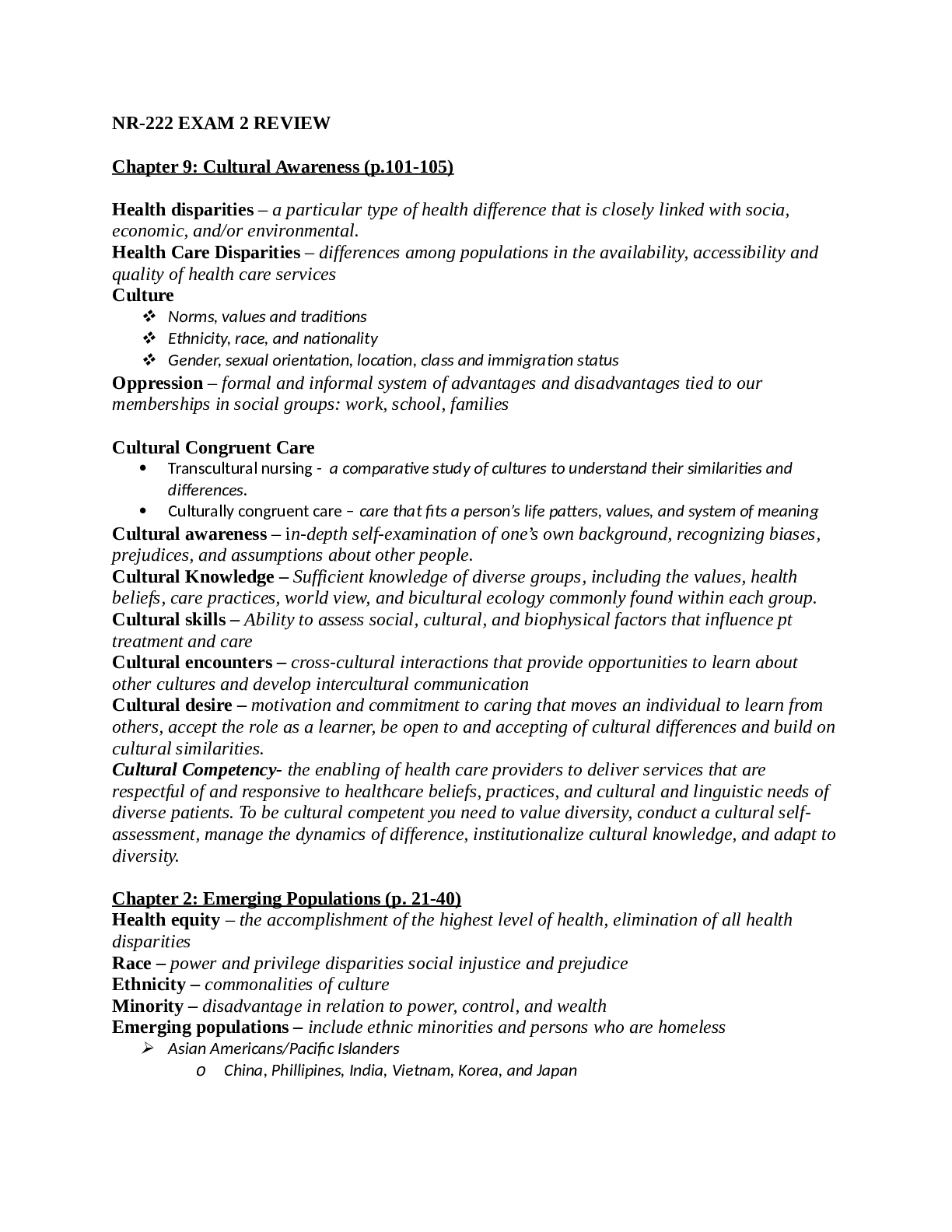
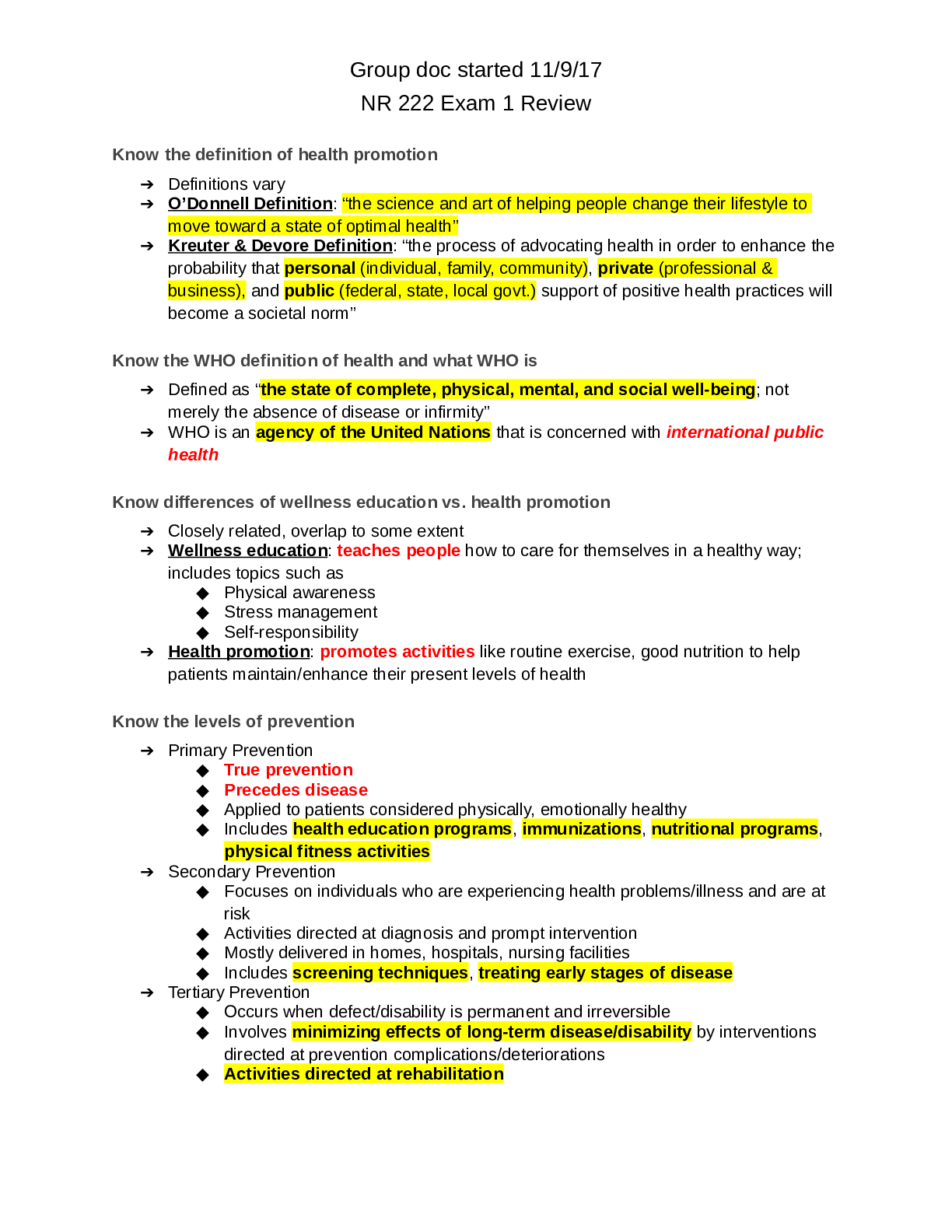

 (1).png)









